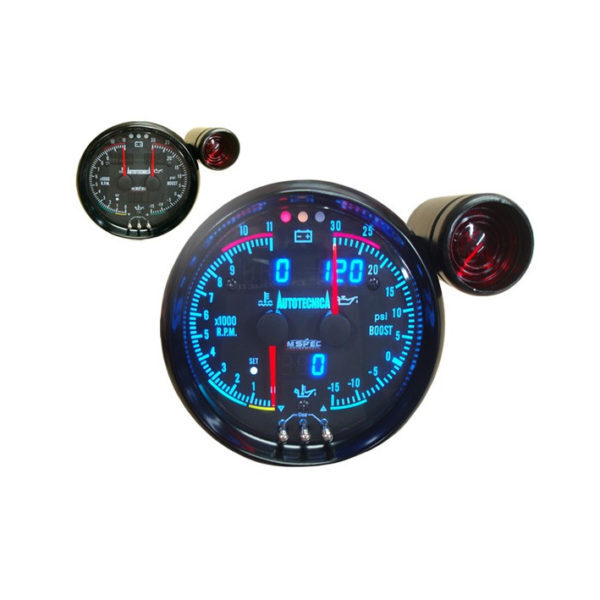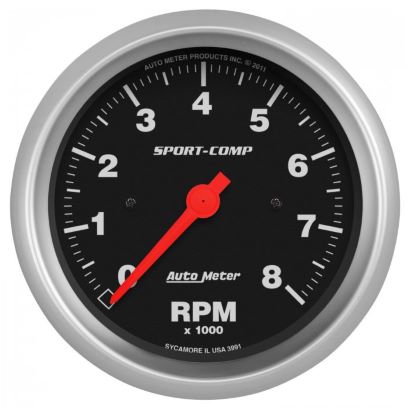Exactly how to Pick the Right Tachometer for Your Car or Motorcycle
Exactly how to Pick the Right Tachometer for Your Car or Motorcycle
Blog Article
The Relevance of a Tachometer in Keeping Track Of Engine Rate and Performance in Automotive Applications
In the world of vehicle engineering, the tachometer stands as an essential instrument in the motorist's arsenal, giving a direct window right into the inner functions of a vehicle's engine. Beyond its feature as a simple scale of revolutions per min (RPM), the tachometer functions as a vital device for lovers and specialists alike, providing real-time understandings into engine performance and wellness. Understanding the relevance of this tool surpasses surface-level monitorings, delving into the detailed relationship between engine speed, power result, and overall driving experience. As we check out the complex role of the tachometer in automotive applications, a deeper recognition for its effect on car dynamics and efficiency starts to arise.
Relevance of Checking Engine RPM
Monitoring engine RPM, or revolutions per min, is a crucial element of automobile maintenance and performance assessment. Engine RPM directly correlates with the rate at which the engine's crankshaft turns, suggesting exactly how rapidly the engine is running - tachometer. By keeping track of RPM, auto mechanics can evaluate the health and wellness of the engine, find prospective problems, and fine-tune performance. An unusual RPM reading might indicate troubles such as engine misfires, damaged ignition system, or problems with the fuel distribution system. Continually high RPM analyses could suggest aggressive driving habits or the demand for a greater gear change to enhance fuel efficiency.
Moreover, keeping track of engine RPM is essential for efficiency assessment in auto racing and high-performance cars. Keeping ideal RPM degrees is vital for achieving peak power result and acceleration. Racers commonly use tachometers to guarantee they are operating within the suitable RPM range for optimum efficiency. In summary, checking engine RPM is not only crucial for spotting concerns but likewise for maximizing engine performance in different auto applications.

Benefits of Real-Time Data
In automobile applications, real-time information plays a critical duty in providing immediate understandings right into the efficiency and problem of the car. By constantly keeping an eye on numerous criteria such as engine rate, temperature level, gas usage, and a lot more, real-time information uses many advantages that add to improved effectiveness and security when driving.
Furthermore, real-time information assists in efficiency optimization by providing prompt comments on driving habits and engine performance. Chauffeurs can readjust their habits in real-time based on this details to accomplish much better gas economy and lengthen the life expectancy of their vehicle.

Furthermore, real-time information plays an important duty in modern auto diagnostics, allowing technicians to swiftly diagnose and deal with breakdowns. This results in minimized downtime, lower maintenance prices, and ultimately, enhanced total vehicle dependability and long life (tachometer). By harnessing the power of real-time data, auto stakeholders can make informed decisions that favorably influence both the performance and longevity of the automobile
Influence On Gear Shifts
Effective equipment changes in auto applications considerably influence general efficiency and driving experience. The tachometer plays a crucial role in optimizing gear shifts by supplying real-time engine rate information to the vehicle driver. When approaching the redline on the tachometer, it signals the chauffeur to upshift to avoid over-revving the engine and creating possible damages. On the various other hand, downshifting at the appropriate minute can aid keep the engine in its power band, ensuring receptive velocity when required.
Additionally, the tachometer aids in her explanation accomplishing smoother gear transitions, particularly in manual transmissions. By checking engine rate, vehicle drivers can implement equipment shifts at the optimal RPM range, reducing snagging activities and decreasing endure the transmission elements. This precision on duty adjustments not just improves driving comfort yet likewise contributes to fuel performance.
Enhancing Gas Effectiveness
Given the critical duty the tachometer plays in enhancing gear changes for performance and engine health, it straight adds to maximizing gas efficiency in vehicle applications. By offering real-time responses on engine speed, the tachometer assists vehicle drivers in preserving the most reliable RPM array for fuel economy. When drivers continually keep track of the tachometer and readjust their driving habits appropriately, they can avoid unnecessary gas usage triggered by over-revving or carrying the engine.
In addition, the tachometer helps vehicle drivers identify one of the most fuel-efficient gear to be in at any type of provided moment, stopping the engine from functioning more difficult than essential. This is particularly critical during acceleration and travelling, where being in the best equipment can significantly affect gas effectiveness. In addition, the tachometer can alert chauffeurs to possible mechanical concerns that could Recommended Reading be negatively influencing gas economy, such as a slipping clutch or a stopped up air filter. Finally, the tachometer serves as a useful device in boosting fuel efficiency by advertising optimal driving practices and determining locations for renovation in the car's performance.

Making The Most Of Engine Durability
The tachometer's function in keeping an eye on engine speed and performance contributes in guaranteeing the longevity of automotive engines. By utilizing the tachometer properly, vehicle drivers can maximize engine durability with mindful RPM management. Continually revving an engine too expensive can cause extreme wear and tear on critical parts, such as the pistons, valves, and bearings. Over time, this can cause lowered engine performance and prospective malfunctions. Checking the tachometer enables drivers to remain within the recommended RPM array for their automobile, avoiding unneeded stress on the engine and expanding its life expectancy.

Conclusion
In conclusion, the tachometer plays a critical duty in keeping track of engine rate and performance in automotive applications. By giving real-time data on RPM, it permits for effective equipment shifts, boosted fuel performance, and taken full advantage of engine longevity. This tool is essential for preserving optimal engine efficiency and guaranteeing the total performance additional reading of a lorry.
Report this page